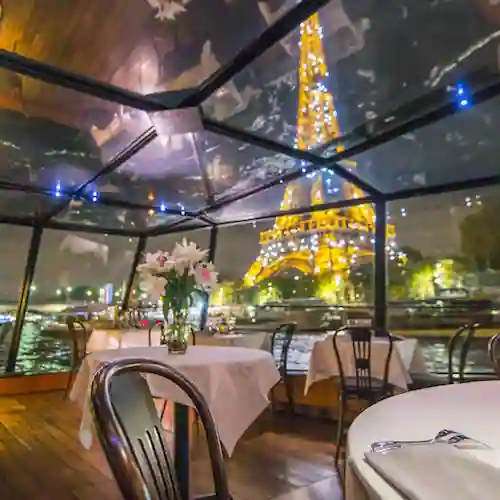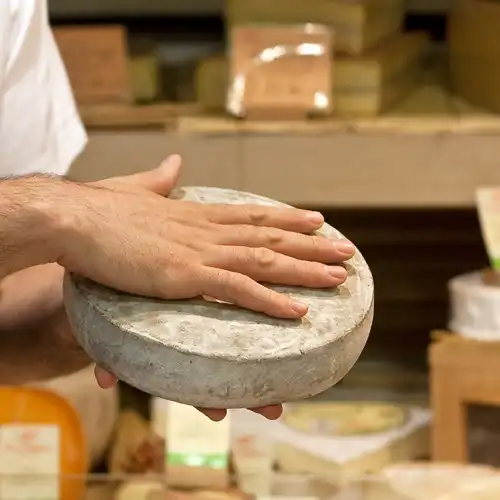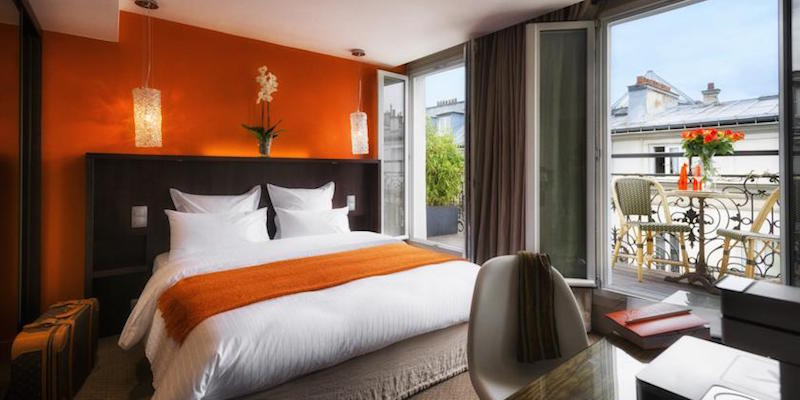Musée du Quai Branly – A Cultural Journey Through Global Art
Situated along the banks of the Seine, just steps from the Eiffel Tower, Musée du Quai Branly offers a mesmerizing dive into the world's diverse cultures. Designed by Jean Nouvel, this modern architectural marvel houses over 370,000 works of art from Africa, Asia, Oceania, and the Americas, providing a deep, immersive experience of global heritage. With its lush vertical garden and striking design, the museum itself is as captivating as the collections it houses.
 The colorful light garden of Musée du Quai Branly
The colorful light garden of Musée du Quai Branly
From ancient sculptures to contemporary creations, Musée du Quai Branly explores human expression across time and geography. Temporary exhibitions and interactive displays enrich the journey, making it a must-visit for anyone intrigued by the arts and cultures of non-Western civilizations. For history buffs, art enthusiasts, and the simply curious, this cultural gem offers a fresh perspective on global diversity in the heart of Paris.
![]()
Our Top-Rated Museum Tours in Paris
1. Musée Picasso Private Tour… Experience the life and work of the master
2. 3-Hour Louvre Semi-Private Tour… Feel like a VIP on a small group tour
3. Musée d'Orsay Impressionist Tour… The top-rated museum tour in Paris
4. The Paris Museum Pass… Free entry to over 60 museums and monuments
Oceania
 From the Oceania collection, photo Musée du Quai Branly
From the Oceania collection, photo Musée du Quai Branly
Oceania is composed of the geographic area stretching from Malaysia to the south Pacific. Connected by its shared history and culture, this department includes Insulindia — eastern Malaysia, Indonesia and the Philippines — Melanesia, Polynesia, Micronesia, and Australia. The geographical division is based on the work of French navigator J.S. Dumont d'Urville, published in 1834. It served as a framework for most future Oceanian collections.
Here you can compare cultural themes such as funerary rituals, and the relationship with ancestors and divinities. Highlights of the collection include a 20th-century anthropomorphic face mask mask from Guinea used in initiation ceremonies. You can also see the influences from Islamic art in the aluminum metal plates and mirrors.
![]()
Discover What's On When You're Here...
• January... |
• February... |
• March... |
• April... |
• May... |
• June... |
• July... |
• August... |
• September... |
• October... |
• November... |
• December... |
Discover What's On When You're Here
• January...
|
• February... |
• March... |
|---|---|---|
• April... |
• May... |
• June... |
• July... |
• August... |
• September... |
• October... |
• November... |
• December... |
Africa
 Photo Musée du Quai Branly
Photo Musée du Quai Branly
One thousand works are displayed in the African collection, organized by region. First are the archaeological masterpieces, then the walking tour begins with the art of Mali. It continues with West African masks and statues from Benin and Nigeria. Cameroon is next, followed by magical objects from the Congo.
The Kota and Fang reliquary guardians (relics that link the living to the dead) are stars of the central and southern African section. You also see funerary posts from east Africa and Christian art of Ethiopia. There are films, texts, and documents — all about African artworks and their civilizations.
![]()
|
Paris Dinner Cruises on the Seine Dine in style as you glide past the Eiffel Tower, Notre-Dame, and the Louvre on a magical Seine River cruise. Gourmet food, champagne, and Paris lit up at night – it’s unforgettable. |
|
Paris Dinner Cruises on the Seine Dine in style as you glide past the Eiffel Tower, Notre-Dame, and the Louvre on a magical Seine River cruise. Gourmet food, champagne, and Paris lit up at night – it’s unforgettable. |
North Africa & the Near East
 Photo Musée du Quai Branly
Photo Musée du Quai Branly
Along the north facade of Musée du Quai Branly are enclosed areas displaying Near Eastern and North African arts. Three areas show the intricacy of woven carpets from rural Morocco. In fact, this special area of Quai Branly is reserved for textile arts. Several displays present traditional costumes with embroidered dresses, coats, waistcoats, and caps.
A small display case dedicated to face-veils features a piece of clothing that dates back a thousand years. Also note the imposing dromedary palanquin (luggage carriers on camels), on which nomad women rode from the steppes of Syria.
Other highlights include talismans, amulets, and ex-votos (offerings to a saint or divinity), evidence of the survival of ancient beliefs. Also of note are the collections of ceramics and of sumptuous gold and silver jewelry. A display case is dedicated to magic and agrarian rites and includes a set of traditional Moroccan punishment dolls. Ouch!
The Americas
 Mexican art, photo Wikimedia by Jean-Pierre Dalbera
Mexican art, photo Wikimedia by Jean-Pierre Dalbera
The Americas collection is divided into two major sections — the 17th century to today and the pre-Hispanic America before the European invasion. The collection kicks off with an area dedicated to Afro-American cultures. Since the museum's opening in 2006, more than 80% of the America's displays have been redesigned to shine new light on 100,000 recently acquired items.
![]()
|
Trade Paris bustle for royal grandeur on a guided Versailles tour. Skip the lines, wander the gardens, and peek inside Marie Antoinette’s private estate. History never looked this good. |
|
Trade Paris bustle for royal grandeur on a guided Versailles tour. Skip the lines, wander the gardens, and peek inside Marie Antoinette’s private estate. History never looked this good. |
Asia
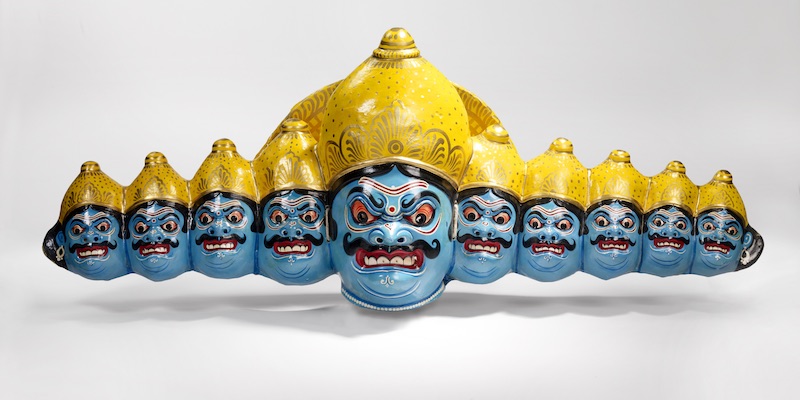 Photo Musée du Quai Branly
Photo Musée du Quai Branly
The section dedicated to Asia presents arts from the 19th century to the present day. The exhibition shows off costumes and finery with Ainu dresses from Japan, saris from India, and jewelry from southern China. There are also themed areas that feature religious arts such as the Buddhism of southeast Asia and shamanism of Siberia.
A Bit of Quai Branly At the Louvre
 Photo Musée du Quai Branly
Photo Musée du Quai Branly
Found at the Louvre, the Pavillon des Sessions is a permanent exhibition for the Branly. Think of it as an ambassador to introduce visitors to the newer museum located across the river and down the road. Inaugurated in 2000, the Pavillon des Sessions features 108 sculptural masterpieces from around the globe.
![]()
|
Browse our hand-picked Paris hotel deals with real-time discounts of up to 20%. Stay in the Marais, Saint Germain, the Latin Quarter, the Left Bank near the Eiffel Tower… every arrondissement is on the list. |
|
Browse our hand-picked Paris hotel deals with real-time discounts of up to 20%. Stay in the Marais, Saint Germain, the Latin Quarter, the Left Bank near the Eiffel Tower… every arrondissement is on the list. |
History of the Quai Branly Museum
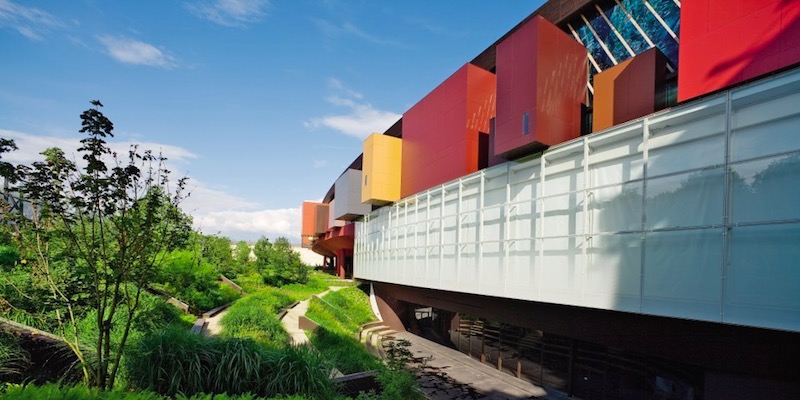
The collection now at the Branly was at one time dispersed across Paris in various museums, including the Louvre. Going was back to 1878, during the Universal Exhibition in Paris, the Musée d'Ethnographie du Trocadero was inaugurated. Then, in 1937, the Museum of Man was established to take the reins from the Musée d'Ethnographie du Trocadero. Redesigned and based on scientific principles, the museum was enhanced by expeditions aimed at creating an inventory of artifacts from cultures of the world.
Around the same time the Colonial Museum was changed into the Museum of French Overseas Territories. And, in 1961, the Colonial Museum became the Museum of African and Oceanian Art, and then to the National Museum of African and Oceanian Art in 1990. Confused?
Anyway, Musée du Quai Branly finally opened in 2006, taking in collections from the other museums mentioned. With more than 370,000 objects, the Quai Branly is Europe's largest center for the promotion of non-European arts and civilization.
Oh, by the way, the museum has recently attached the name of Jacques Chirac (former mayor of Paris and former president of France) to its official title, making it the very cumbersome Musée du Quai Branly – Jacques Chirac.
![]()
|
Skip the lines and join an expert-led tour through the Musée d'Orsay — home to Van Gogh, Degas, and Monet. It’s the ultimate walk through 19th-century art in a grand old train station. |
|
Skip the lines and join an expert-led tour through the Musée d'Orsay — home to Van Gogh, Degas, and Monet. It’s the ultimate walk through 19th-century art in a grand old train station. |
Musée du Quai Branly Resources
 Quai Branly, from the Eiffel Tower, 2017, photo by Mark Craft
Quai Branly, from the Eiffel Tower, 2017, photo by Mark Craft
When you're at the Eiffel Tower, head towards the Seine and take a right turn — it's a short six-minute walk to the unassuming entrance of the Quai Branly Museum After your visit, relax in the outdoor cafe or head upstairs for lunch or dinner for the museum's rooftop restaurant, Les Ombres.
- 37 Quai Branly
- 7th Arrondissement
- Metro — Alma-Marceau, Iena
- 10:30 AM to 7 PM. Thursdays until 10:00
- Closed Monday and public holidays
- Website…
Paris Planning Guides
 Book an Airport Transfer
Book an Airport Transfer |
 Skip-the-line Louvre Tour
Skip-the-line Louvre Tour |
 Left Bank Hotels
Left Bank Hotels |
 Glorious Dinner Cruises
Glorious Dinner Cruises |




